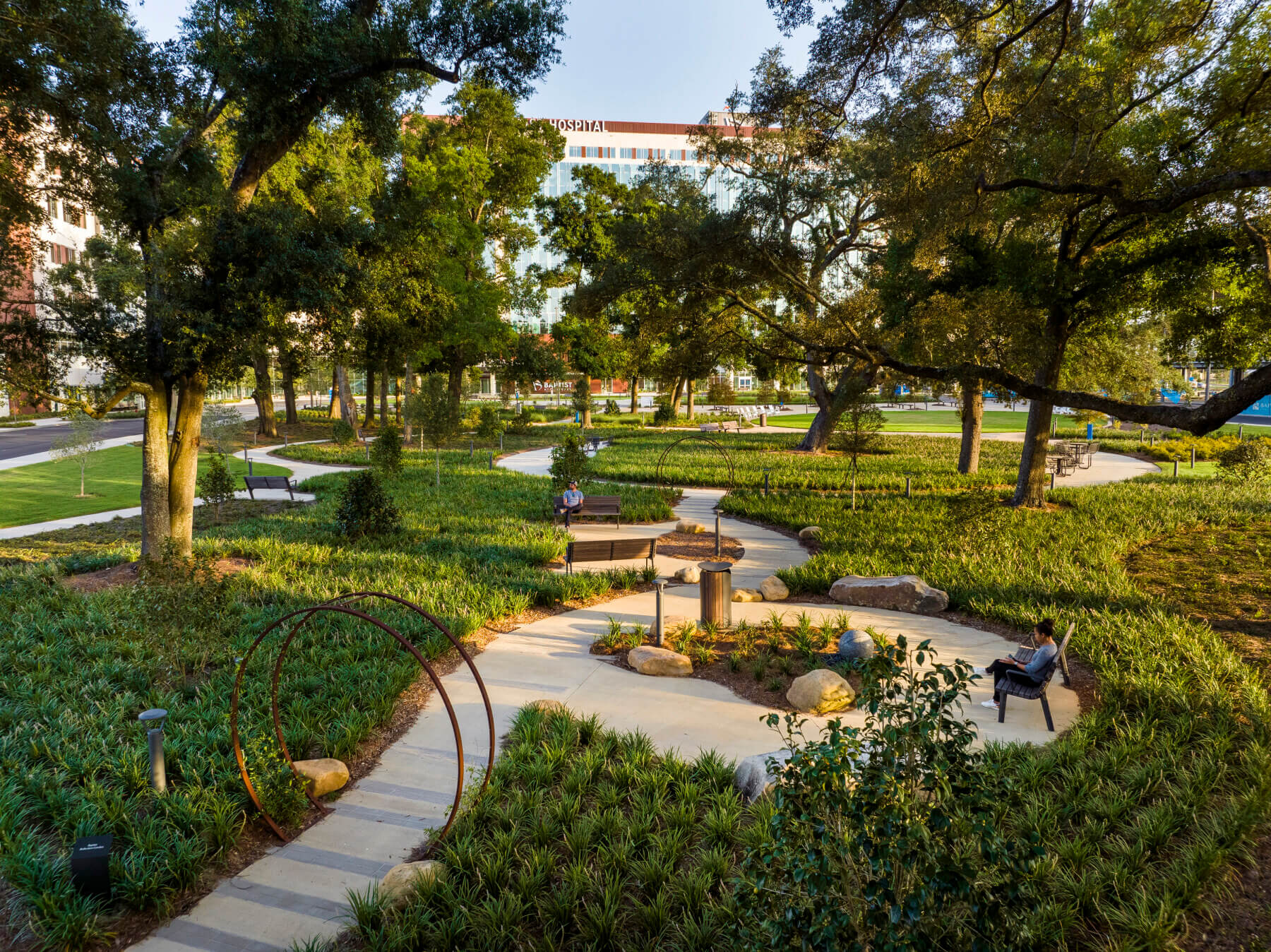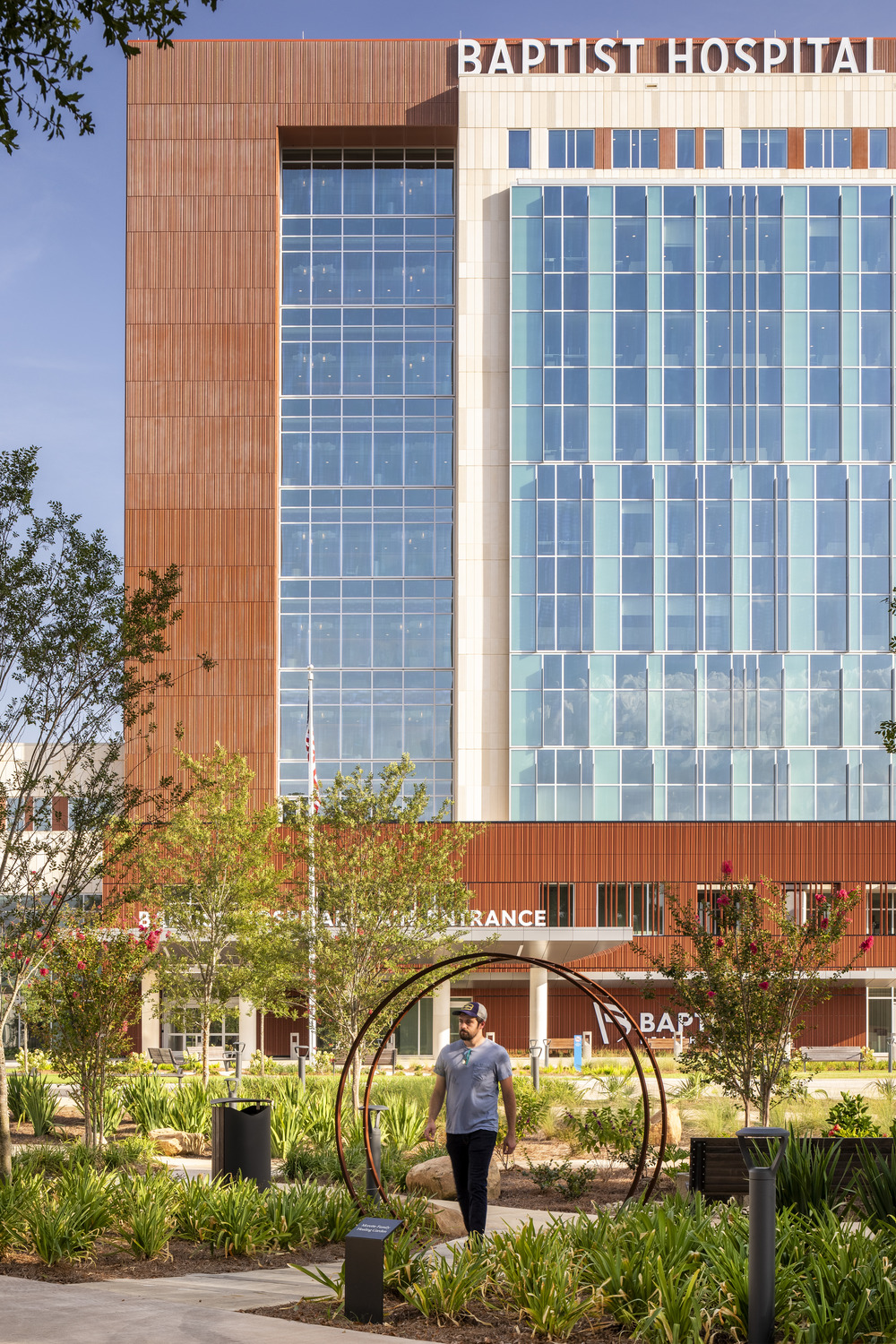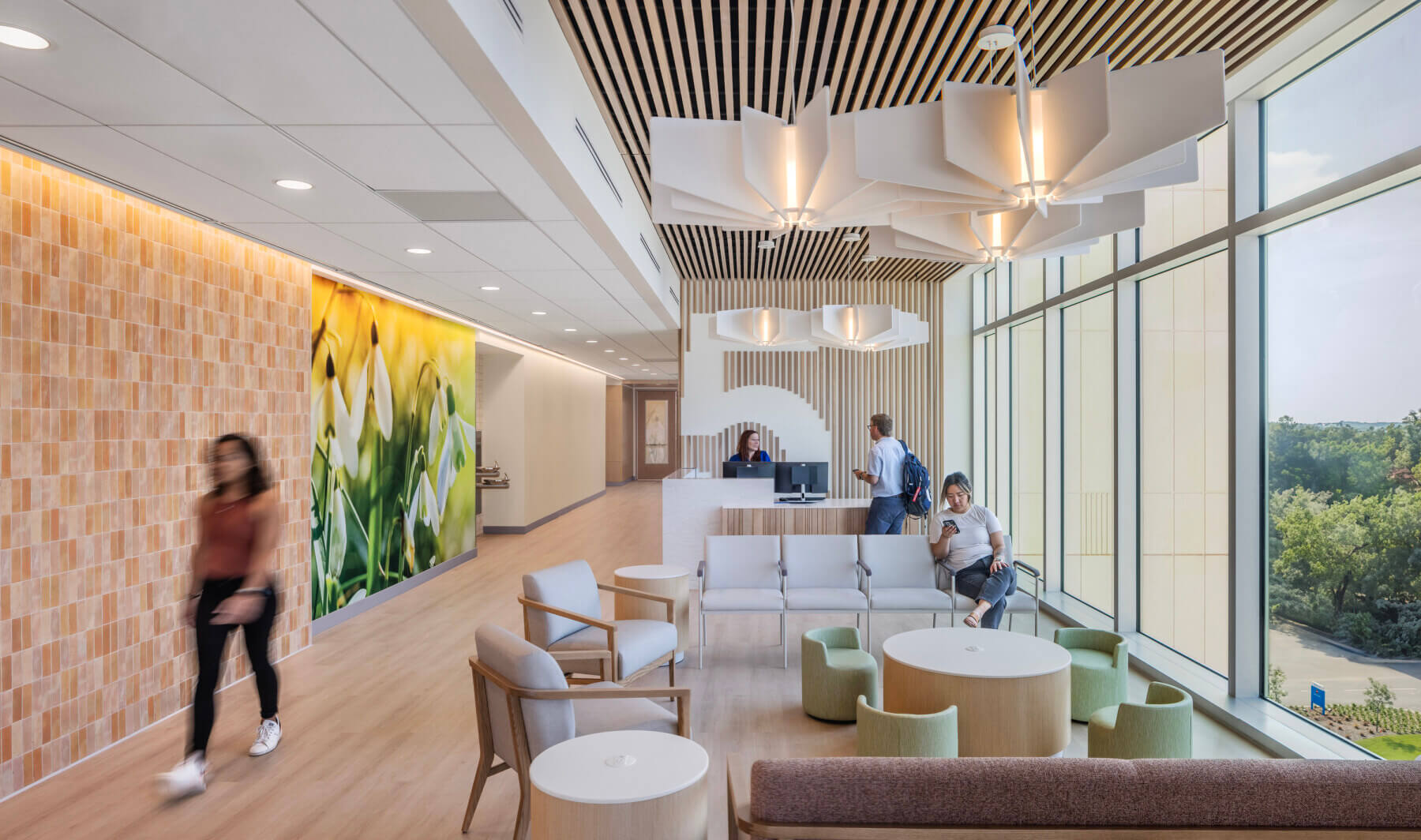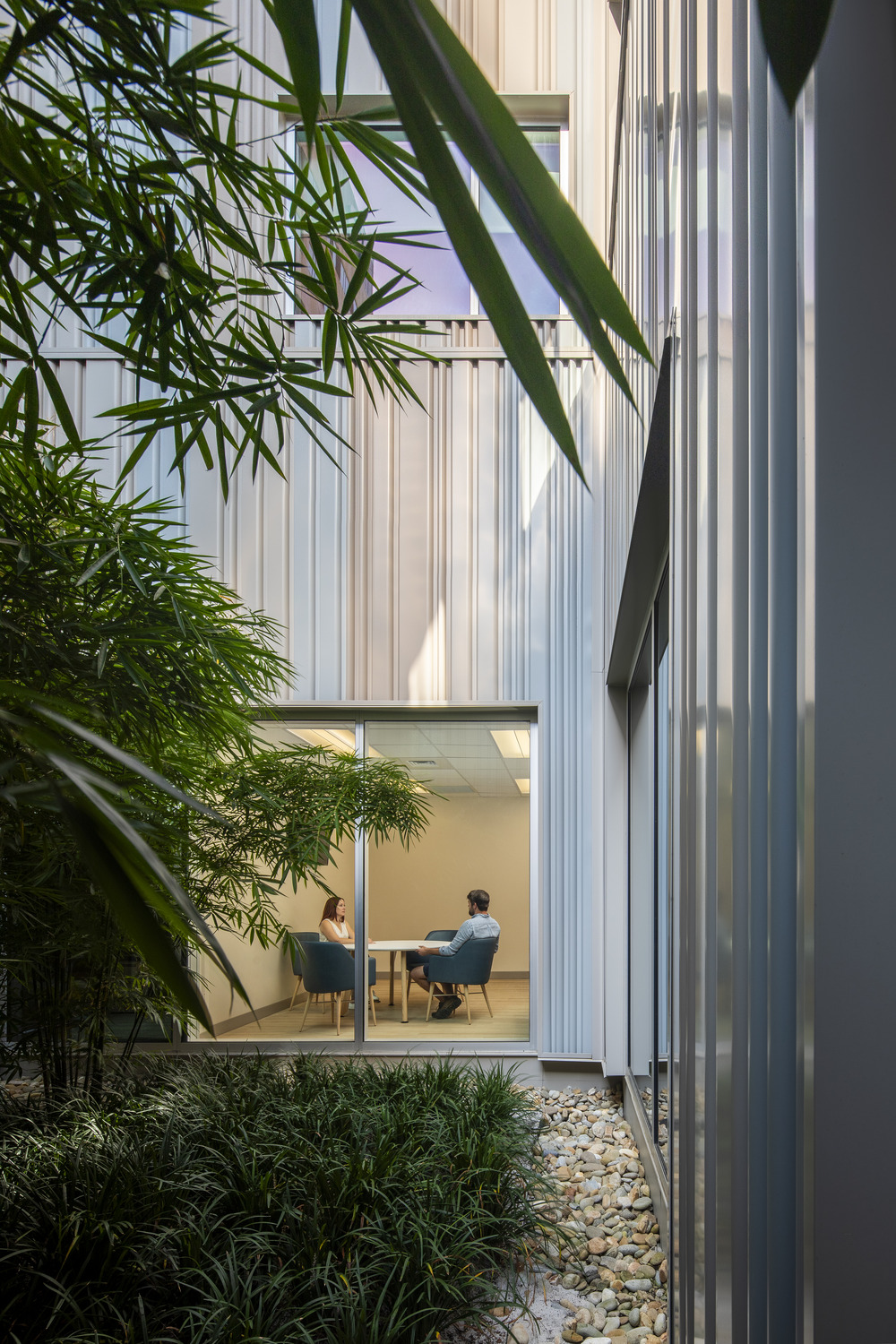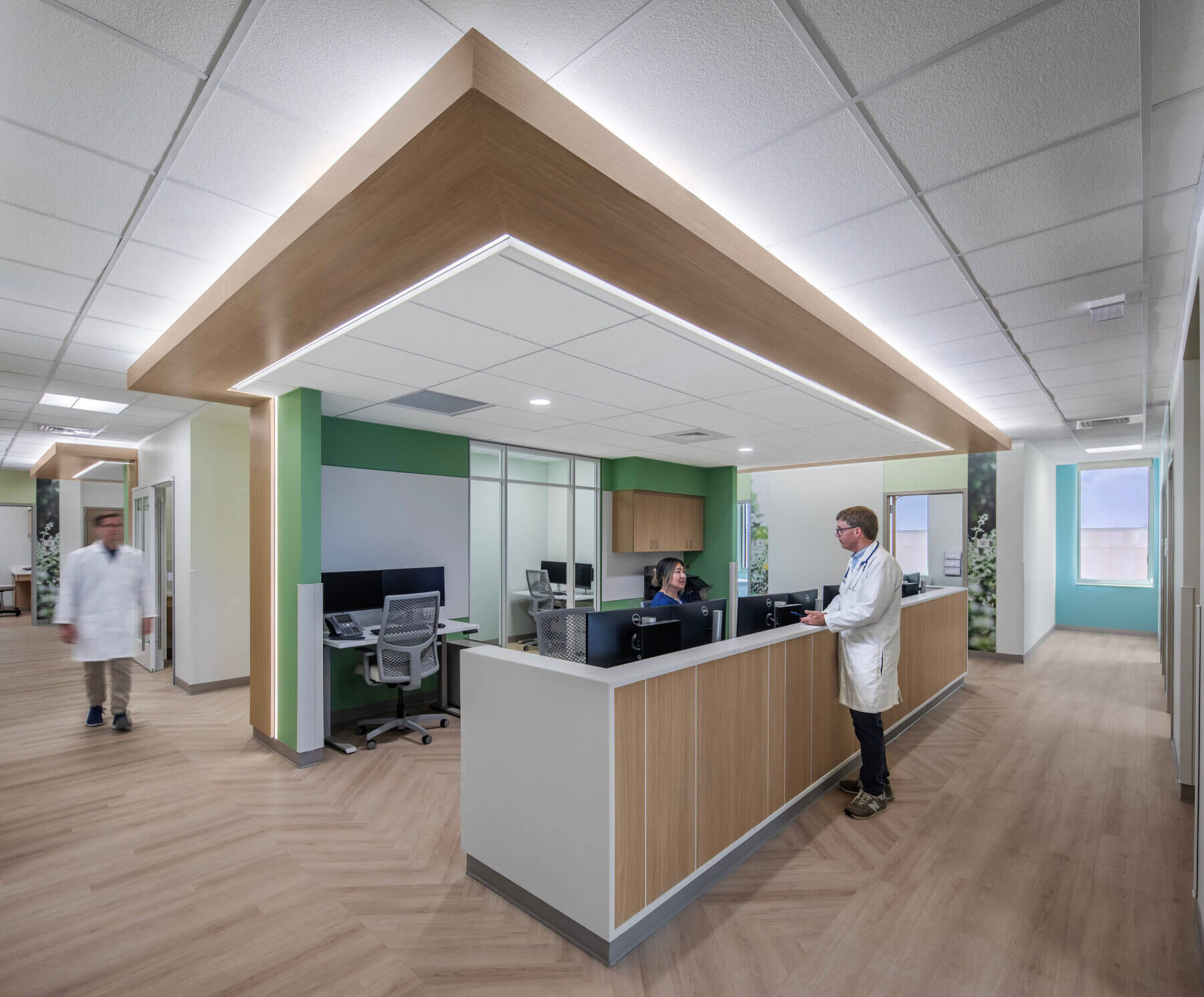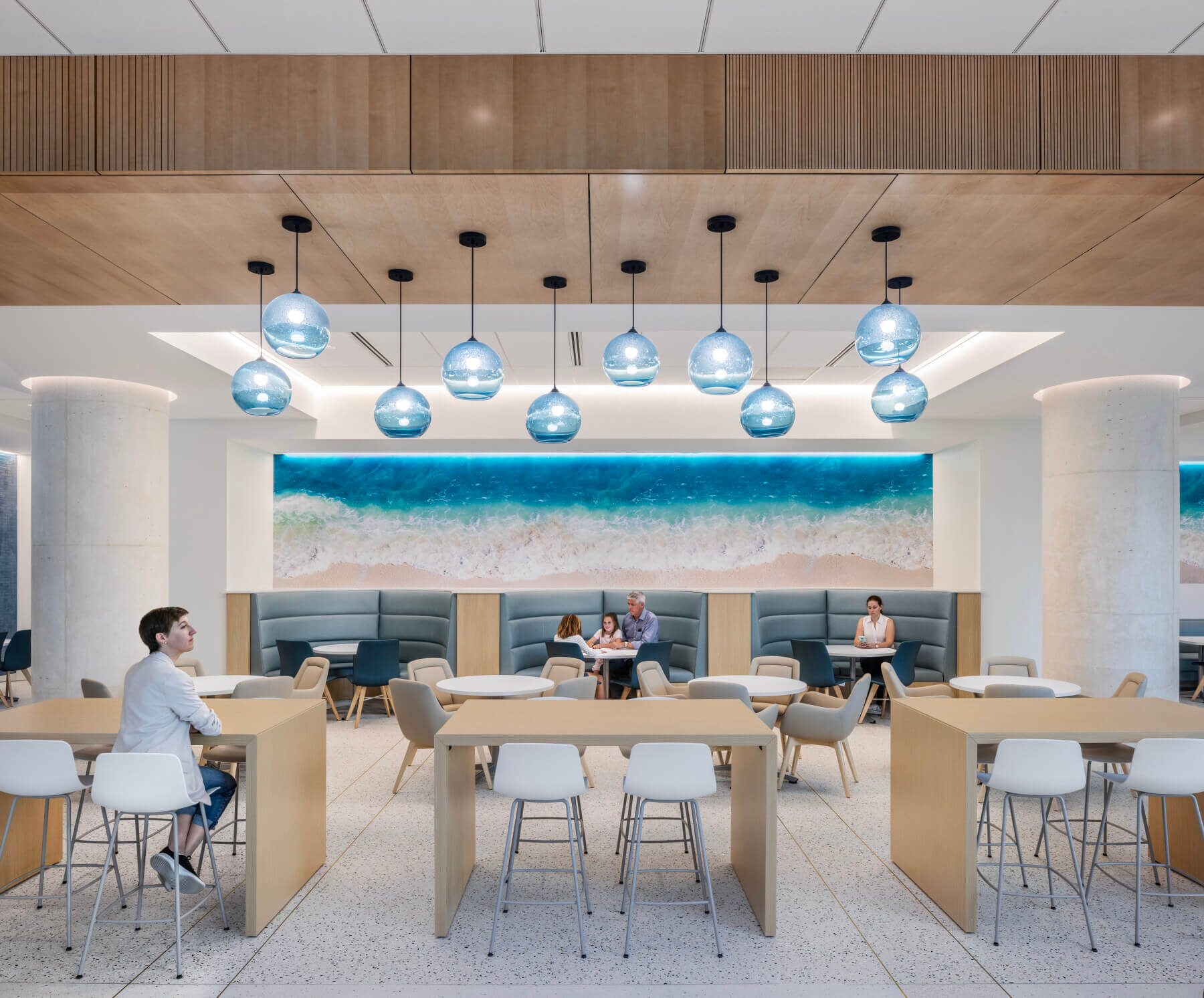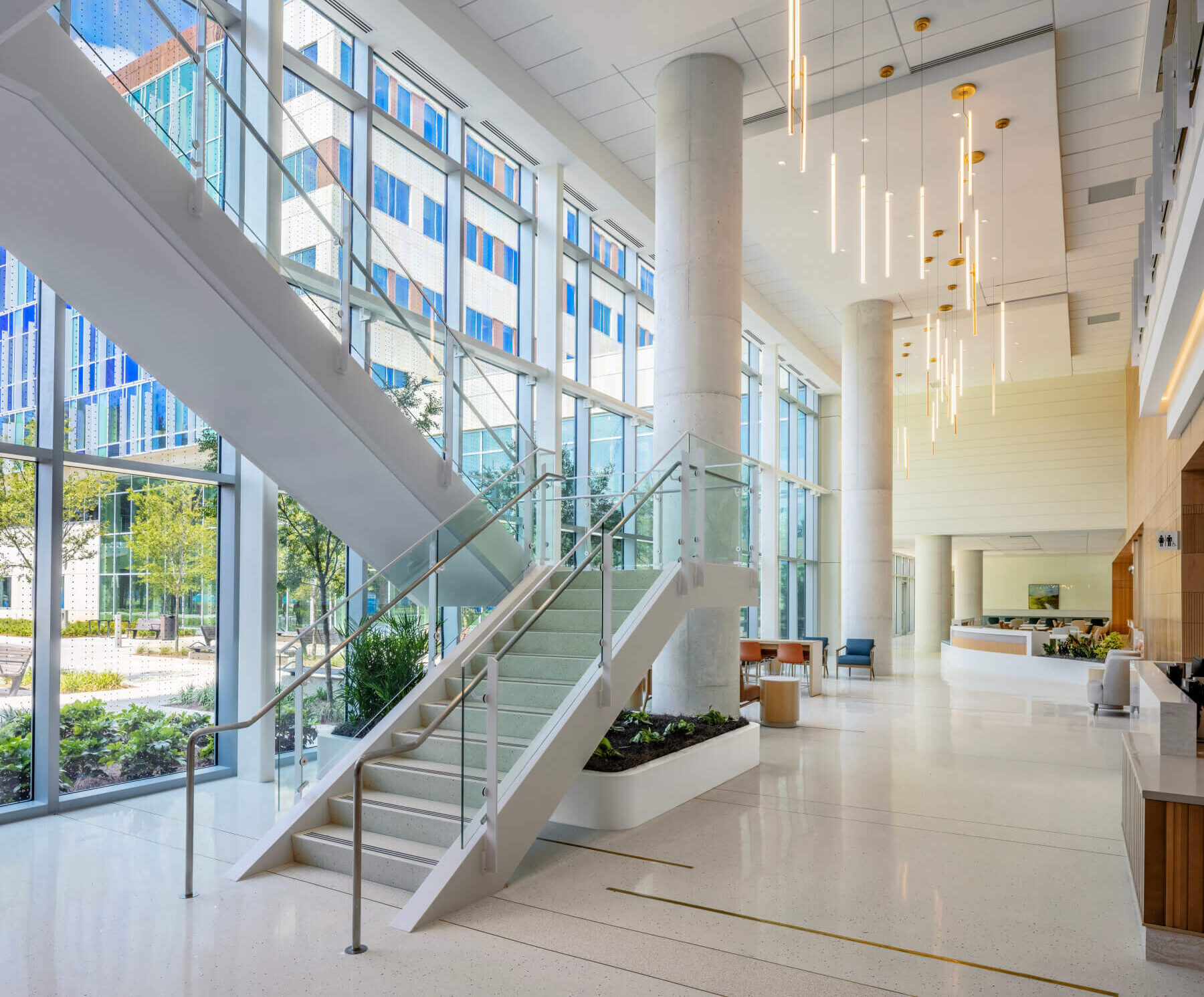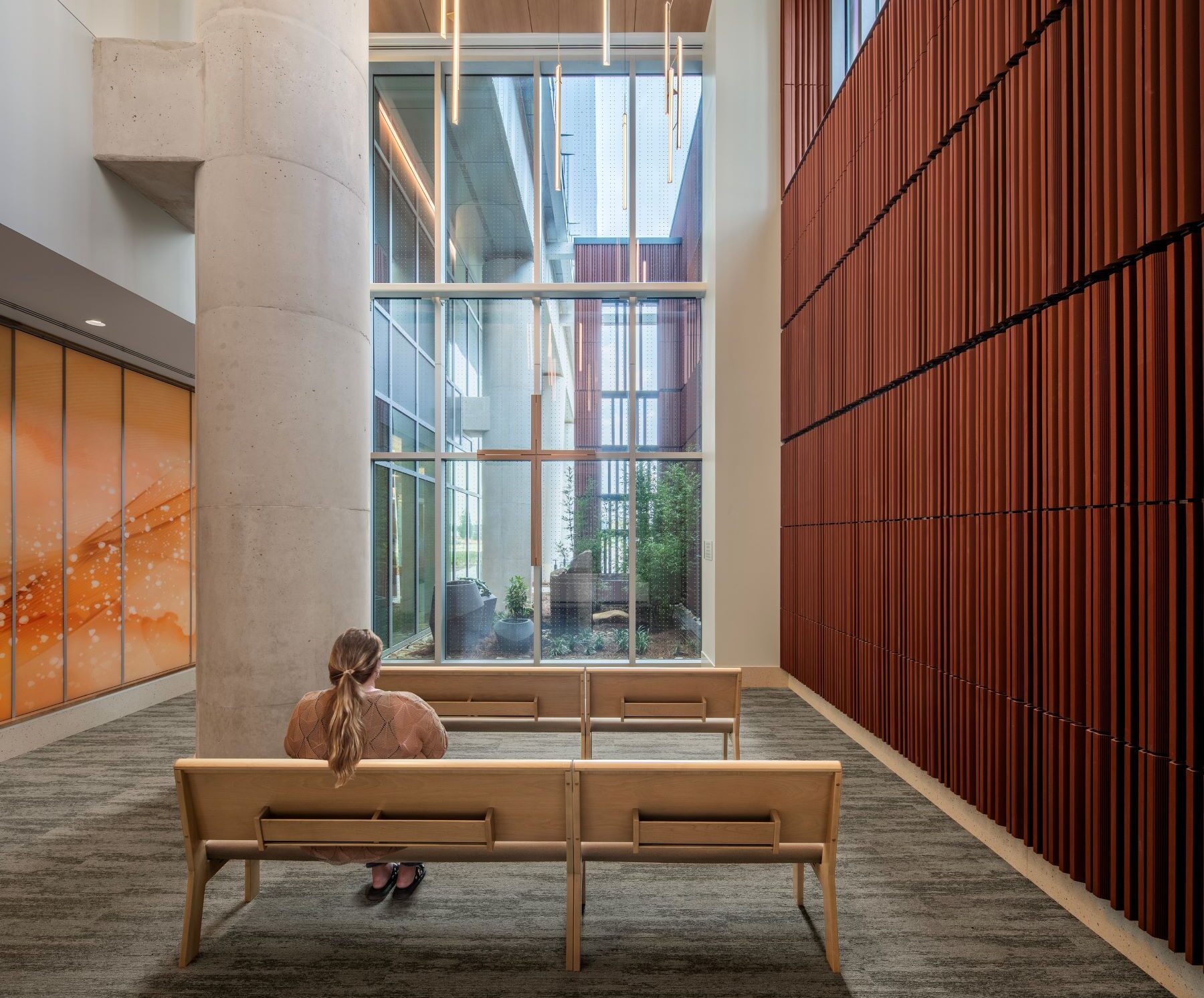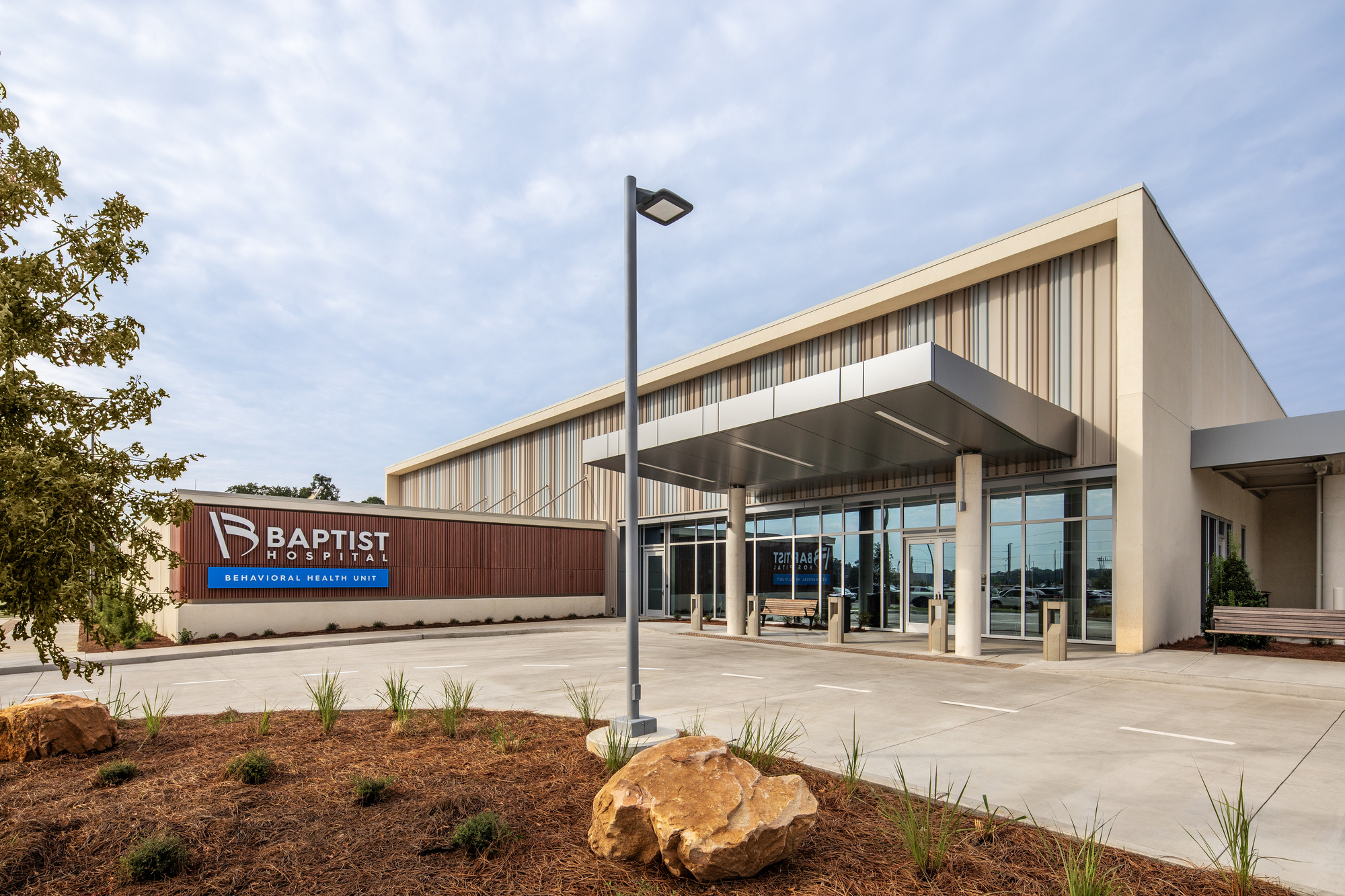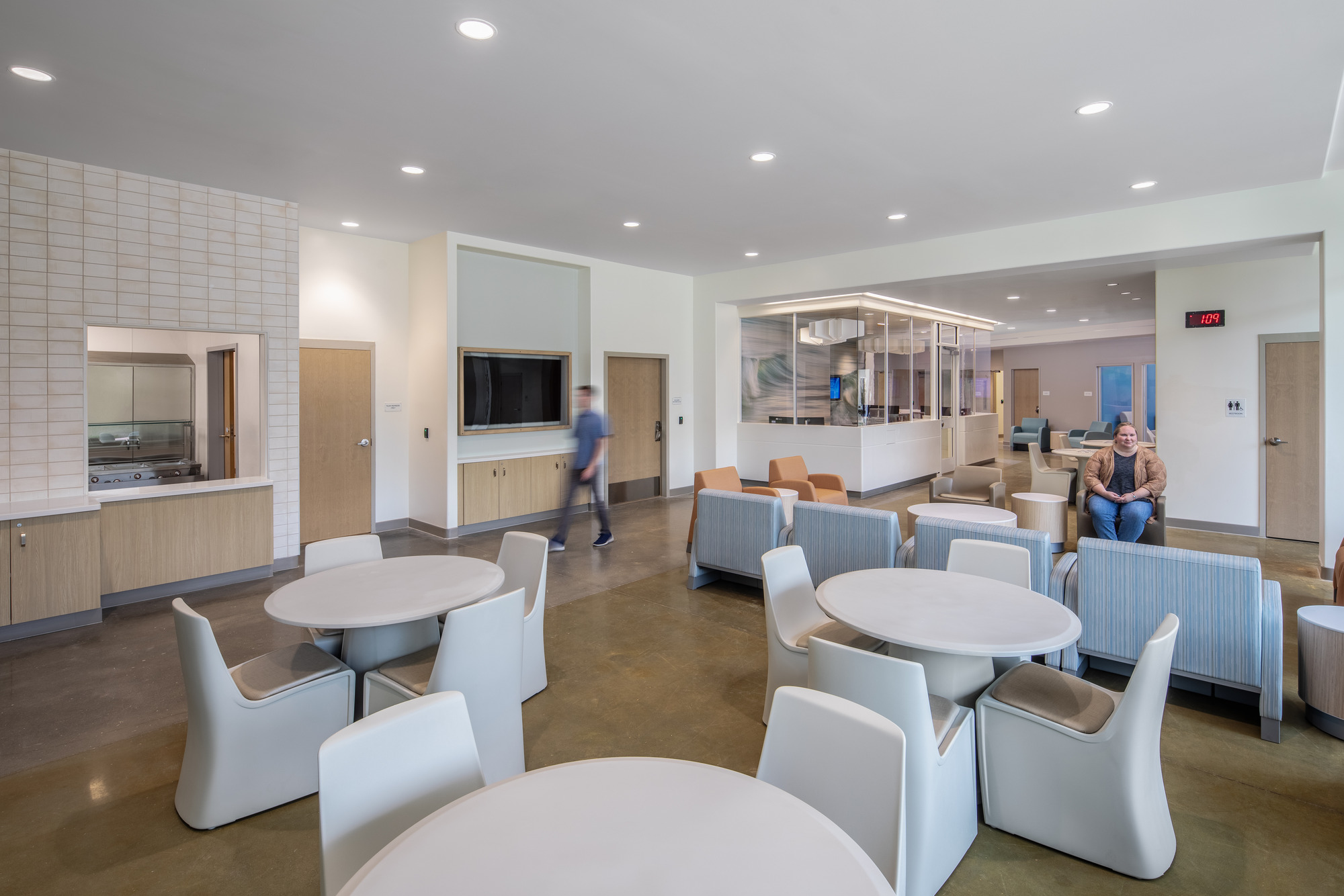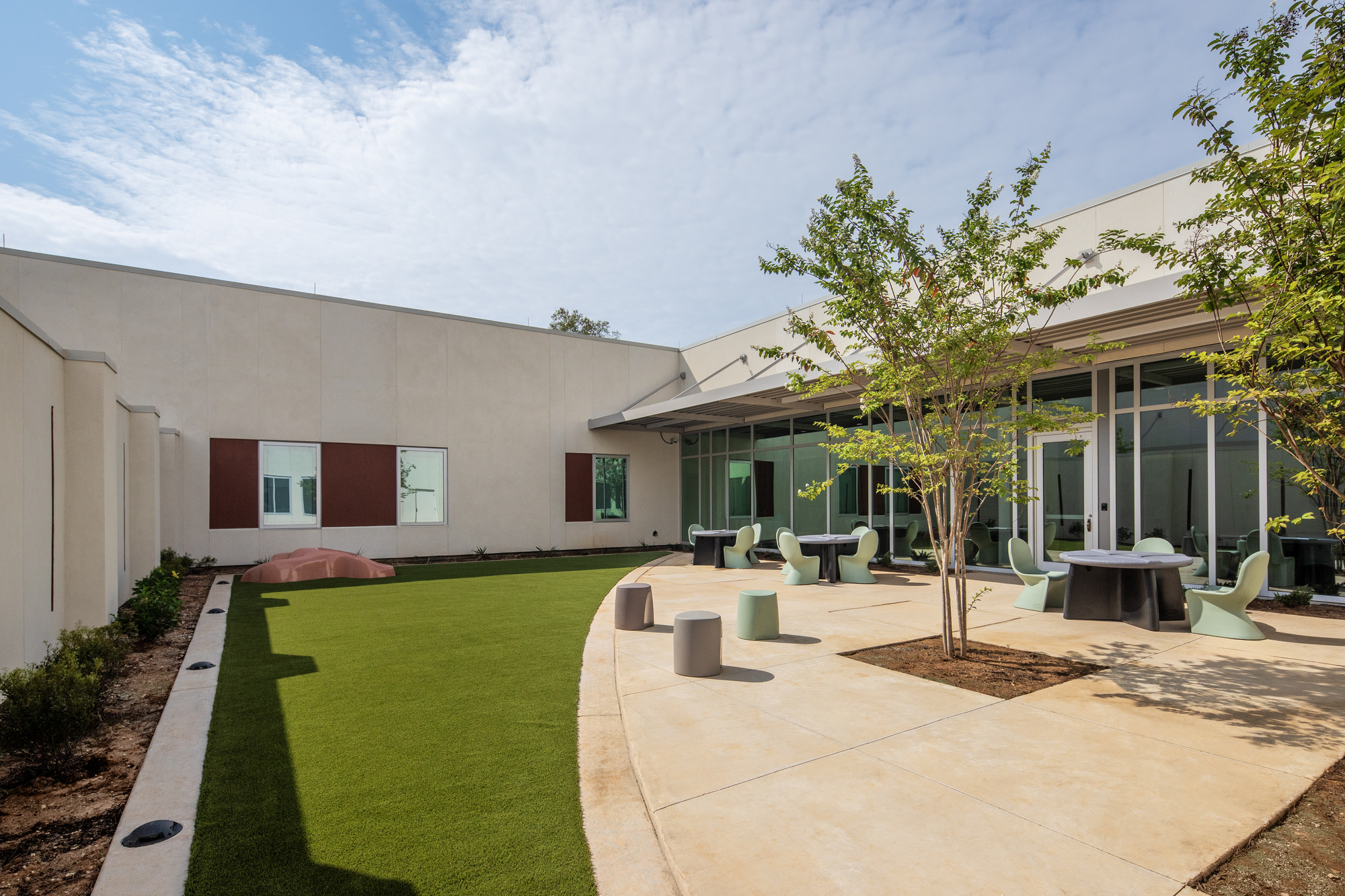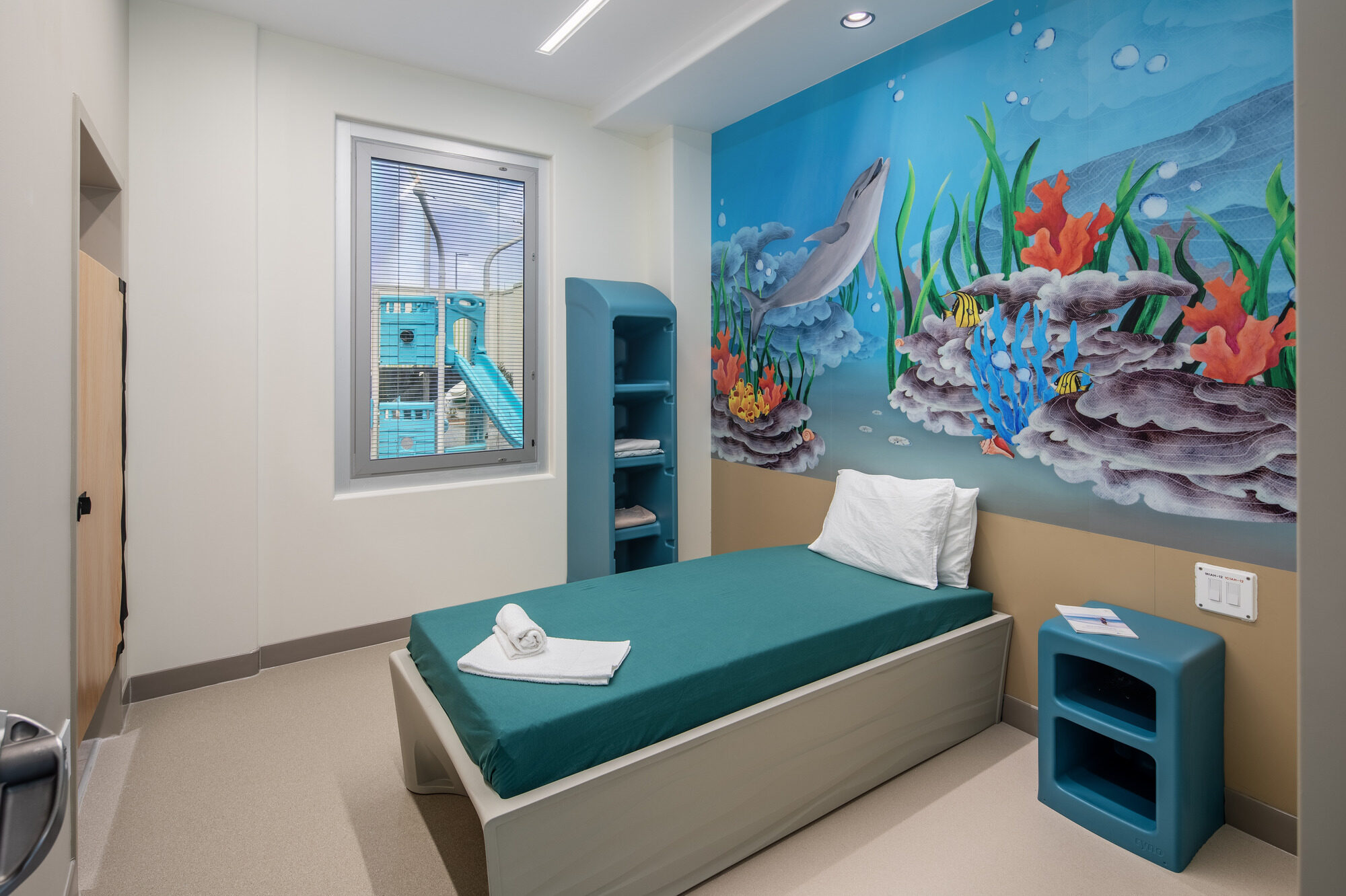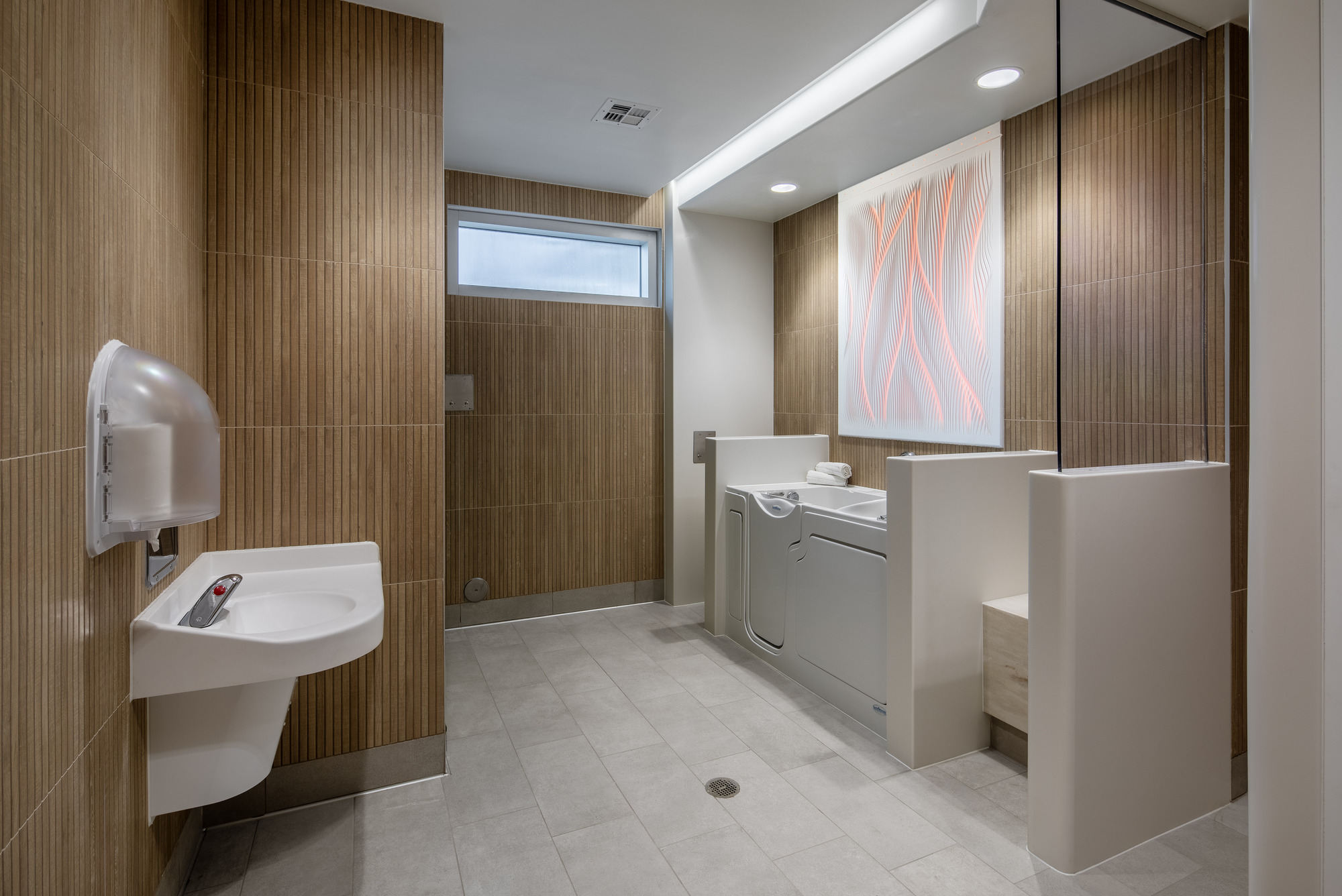Built in 1950, the existing hospital had undergone multiple additions and renovations during its history. Challenged with failing infrastructure, inadequate patient-care spaces, and undersized and inefficient clinical departments, BHC envisioned a design that supports the Northwest Florida region in a way that puts patients and families first. We delivered on their vision through a design solution developed around value-added design goals that embrace the future with advanced technology, enhanced patient safety, resilient systems, and a thoughtfully crafted human experience.
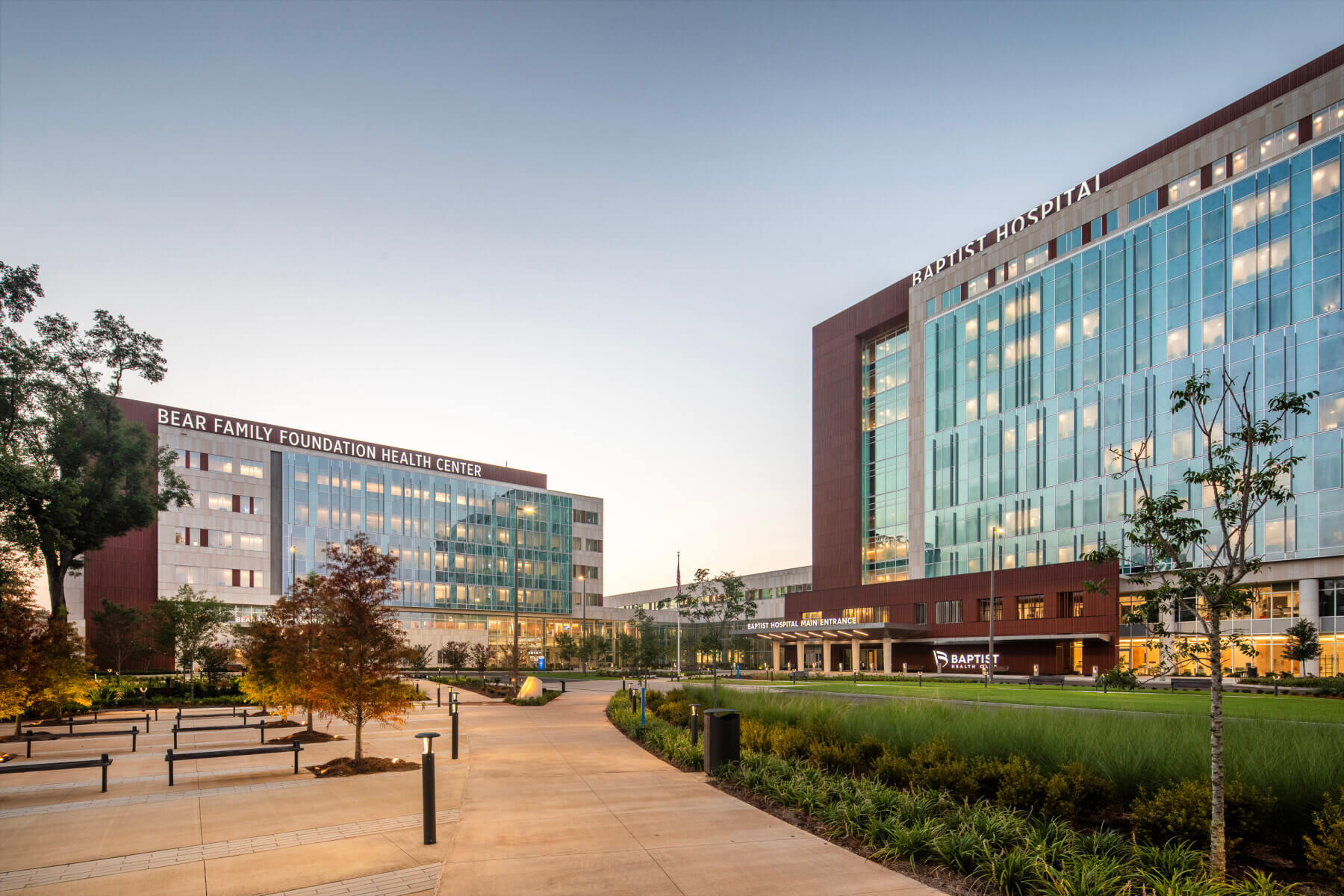
The campus is organized around a park-like town square that includes groves of heritage oak trees native to the Northwest Florida landscape. Founded in 1765, Pensacola’s historic Plaza Ferdinand Park created a precedent for the design, which incorporates a variety of amenities including walking paths, rehab areas and outdoor event space. To embrace and celebrate the natural context, preserving the heritage oaks—some of which are hundreds of years old and up to 60 inches in diameter—was not only important to the client and community, but also to the design team.
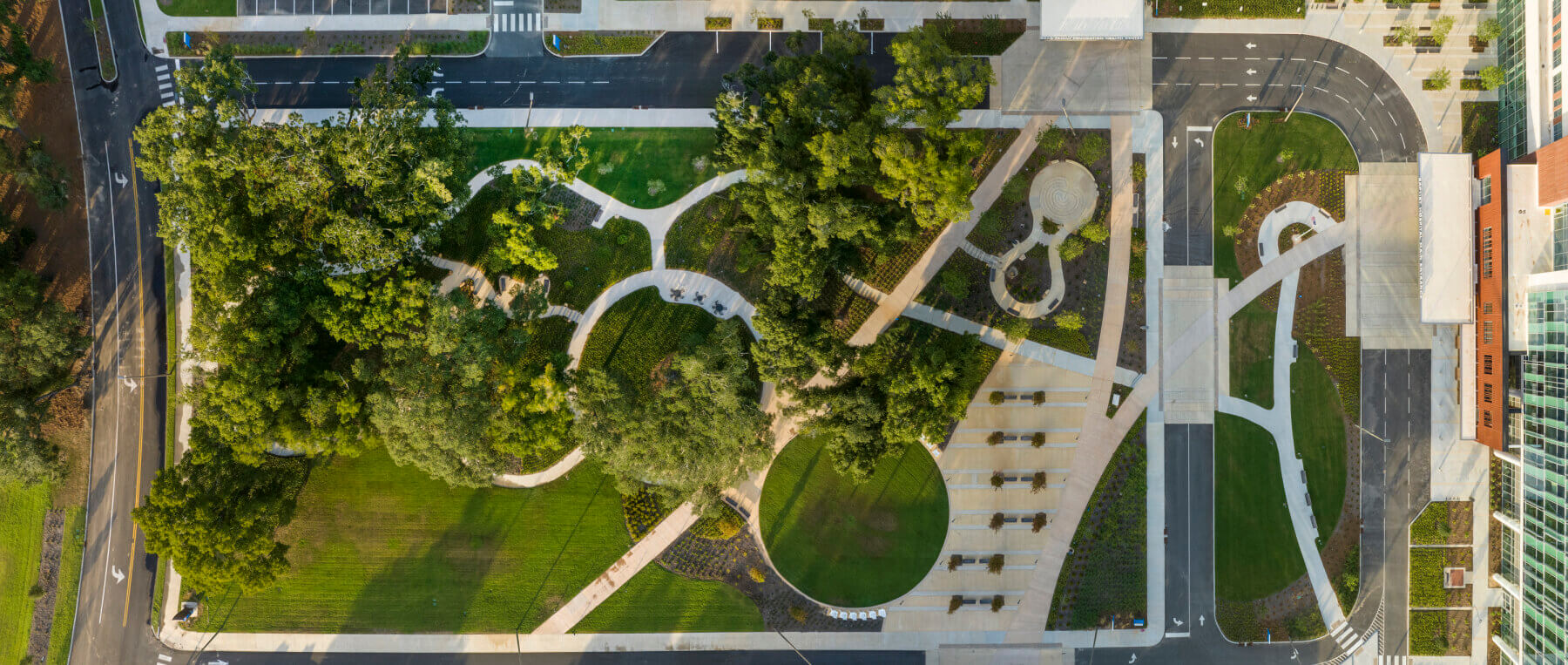
Wind-swept sand ripples, shifting clouds, and the way natural light filters through trees offered design inspiration for the movement and textures across the building façades. The variation found in these textures provides a “consistent inconsistency” that mimics the natural environment of Pensacola and creates a rhythm that softens the large façade. Additionally, the exterior design not only celebrates the connection between water and the sky, but also pays homage to the city’s historical character and local buildings.
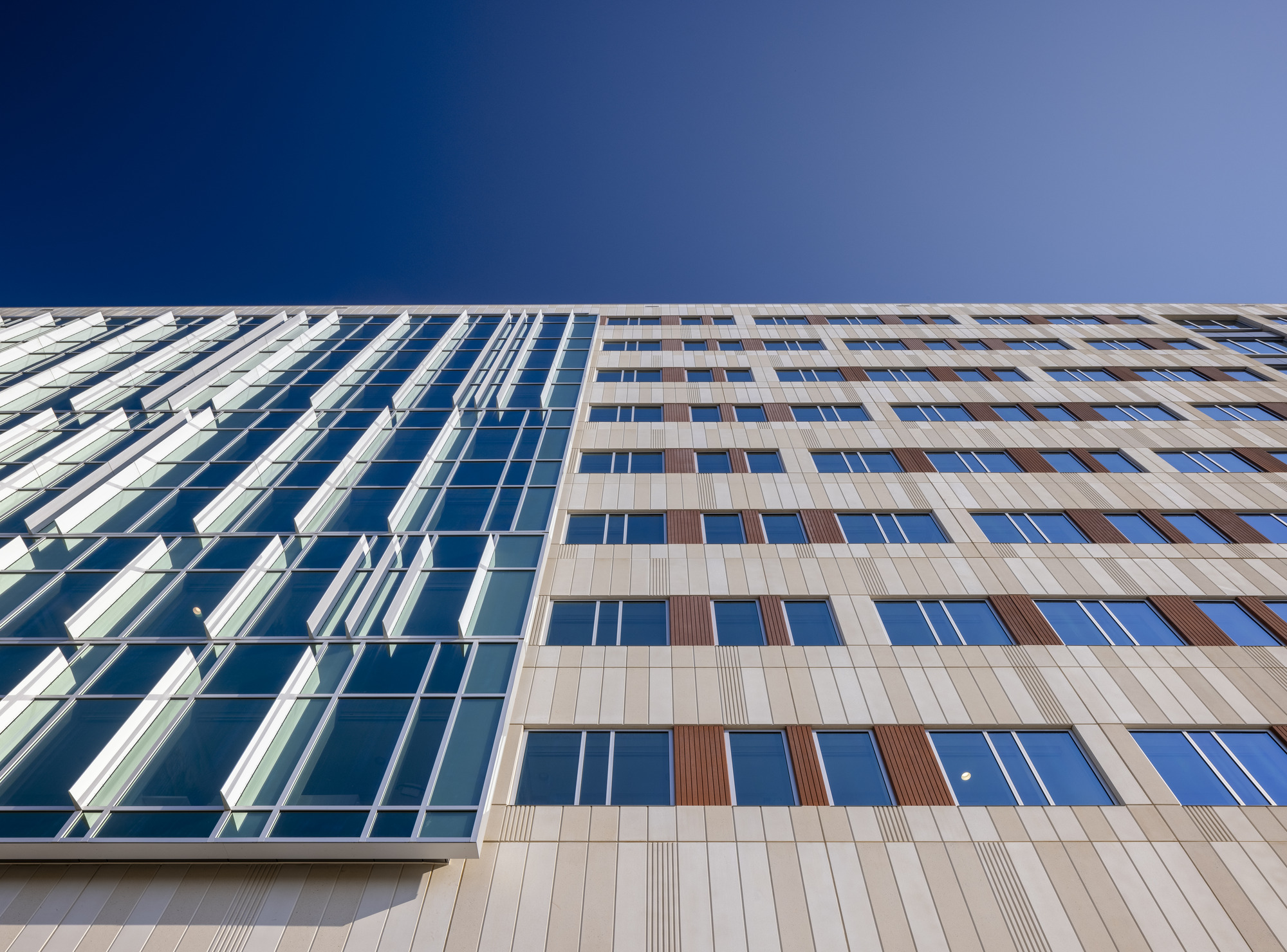
The campus is designed so that the architecture and interiors seamlessly work together in harmony. At the main entrances, expansive windows offer dramatic views of the town square, entry and cafe gardens. Warm, handcrafted materials like terracotta, wood, bronze and terrazzo lend depth and a timeless appearance to modern forms and promote comfort and healing.
It was critical to BHC that the new campus withstand major weather events. We conducted a comprehensive Climate Risk Assessment that examined rainfall projections 50 to 100 years into the future. Following the risk assessment and an in-depth flood analysis of the site, we responded with a resilient design solution that extends beyond code compliance to enable the facilities to endure a Category 5 hurricane and a 1000-year storm flooding event while remaining functional through power and water service interruptions. Our design also incorporates both traditional and innovative sustainability features—from the building orientation and glass selections to stormwater-recovery for irrigation and cooling tower water.
Sustainability & Resiliency Features
- • Building elevation can accommodate 1000-year floods
- • Structure and envelope can withstand 170 MPH, three-second wind gusts
- • 4 days of off-grid operational capacity
- • 96 hours of emergency power available
- • N+1 capacity of mechanical systems eliminates service disruption
- • Stormwater supports cooling towers and irrigation systems
- • Ceramic frit and vertical fins reduce cooling loads
- • Type 1L cement reduces embodied carbon by 13%
- • Recovery systems capture 70%+ of energy from exhaust air
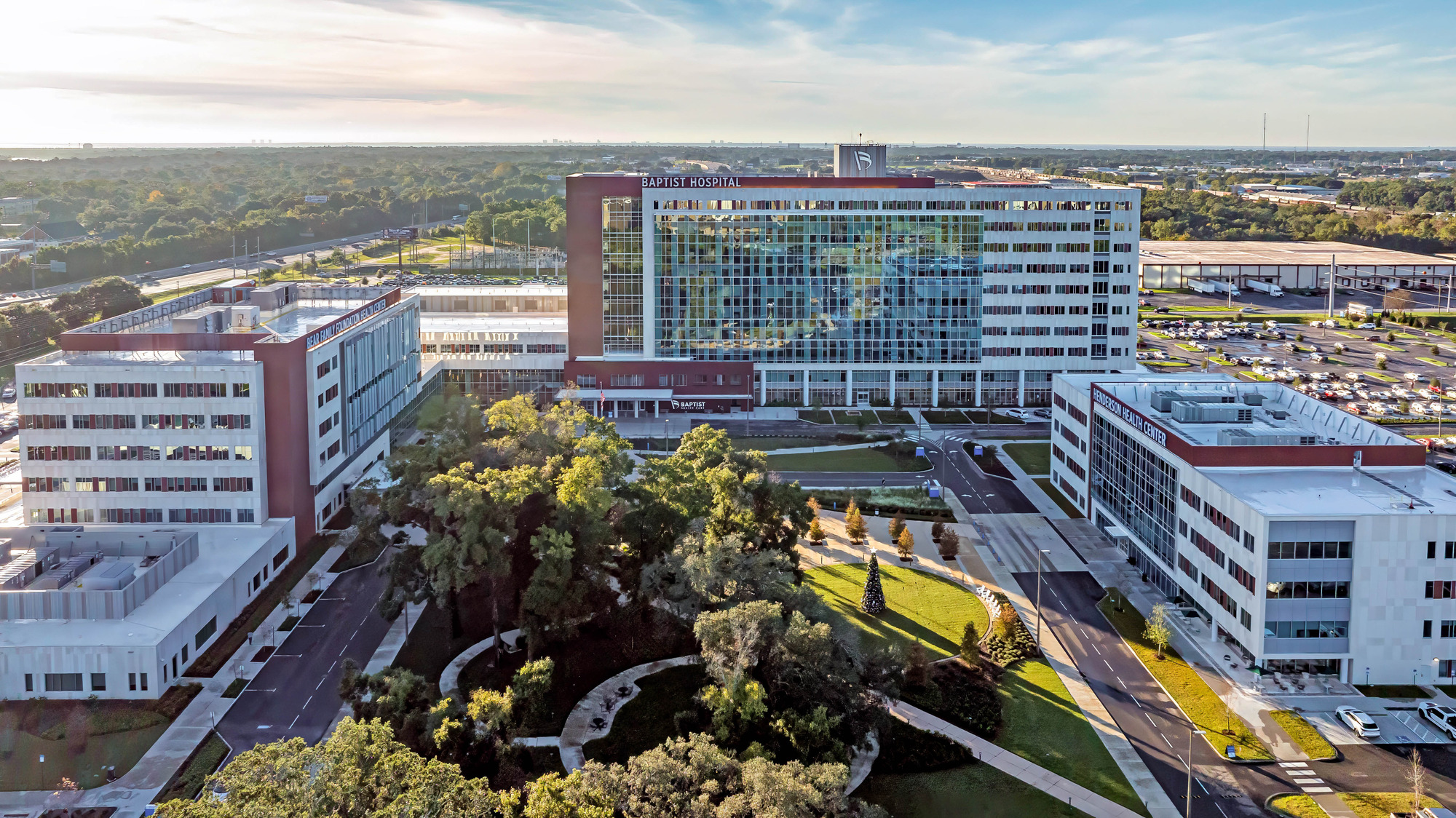
The 72-bed Behavioral Health Unit provides inpatient behavioral health care for both adults and children. Windows in patient room doors and care view cameras enhance visibility into patient areas, which are located adjacent to large windows and have access to gardens and courtyards. Centralized nurse stations with an on-stage off-stage layout separate patient population while enhancing workflow and providing flexibility should population needs shift. Additionally, the one-story facility was intentionally designed at a residential scale to create a comfortable, non-institutional environment.
